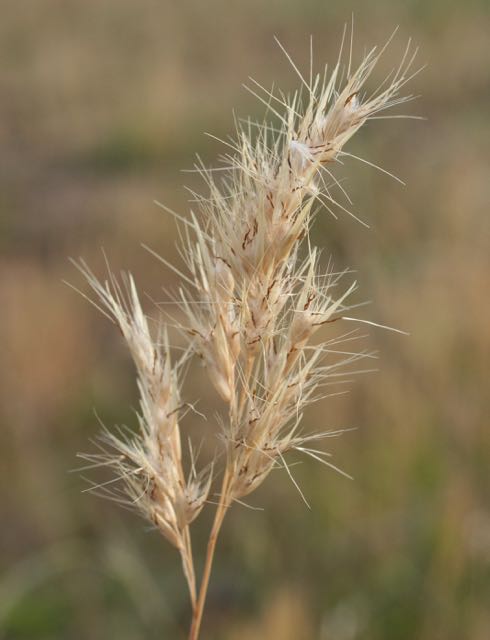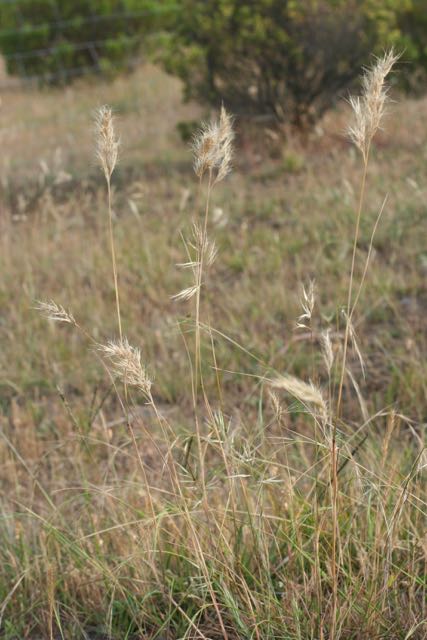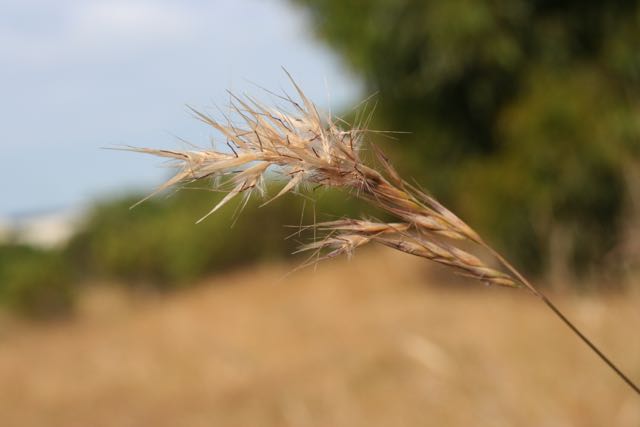


Common Wallaby-grass is a perennial tussock-forming grass growing during the warmer months of the year and then becoming dormant in winter. It is probably the most common of the wallaby grasses along the cliff top. It is most likely to be seen in the native Grassland area in association with other Wallaby grasses as well as other native grass species. Like most Wallaby grasses in our area it tolerates dryness.
Bleached, fluffy seedheads appear in early summer following spring flowering. They look particularly dramatic when seen in large drifts.
Leaves have a bluish tinge on the upper surface and are usually sparsely hairy and either flat or loosely inrolled,
Red-browed Finches feed on the seedheads in summer.
Indigenous uses as provided by the Wathaurung Aboriginal Corporation: The seeds of Wallaby grasses can be ground and used to make flour for dampers and johnny cakes. Many birds also eat the seed that were hunted such as pidgeons and quail.
The two sides of the leaf are different colours